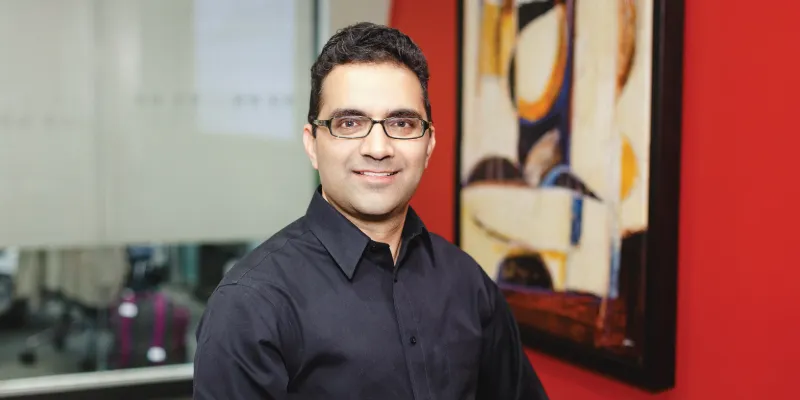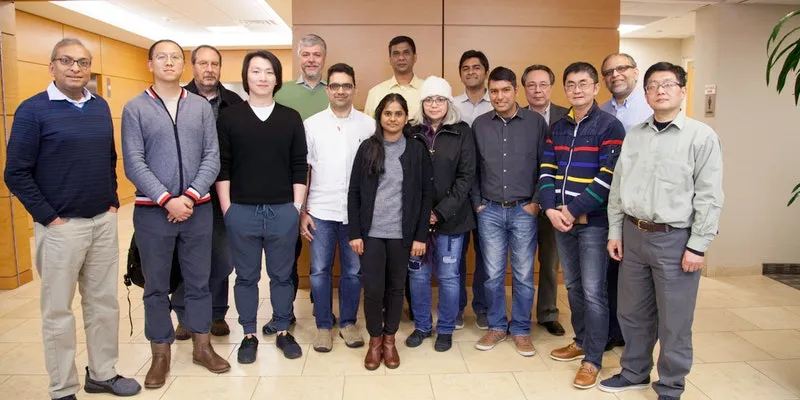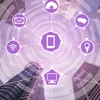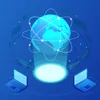This US IoT startup wants to first make its mark in India before anywhere else
Smartiply, a B2B tech startup headquartered in the US, has successfully deployed its IoT solution in the India market first and plans to replicate this success in other geographies.
A pure play technology startup based in New Jersey, US leveraging Internet of Things (IoT) has decided that it would focus on the India market first before entering any other.
IoT startup Smartiply, founded by Kaushik Pillalamarri, Mung Chiang, and Junshan Zhang in September 2015, was spun out of premier academic institutes Princeton and the Arizona State University. The founders decided to go to a market with the most challenging conditions in terms of IoT deployment. And what could be better than India where connectivity outside of metros is still a challenge?
A technology executive, Kaushik has worked with multiple corporates, while Mung and Junshan have deep expertise in the area of fog computing.
Fog computing to the rescue
Smartiply works on the principle of fog computing. So, what is fog computing?
Kaushik, CEO, chuckles, “When cloud computing descends, it becomes fog computing.”
Strictly speaking, fog computing is the infrastructure providing seamless connect where data, compute, storage, and applications are located somewhere between the data source and the cloud.
For example, bank ATMs are placed in a wide geography and keeping a tab on them becomes difficult. Also, not all locations might have broadband access and so the dependency on cellular networks is bigger.

Smartiply Co-founder Kaushik Pillalamarri believes that once you solve for the India market, you are ready for the rest of the world.
Smartiply’s IoT solution enables data to be continuously streamed from these locations to one central place for real-time monitoring. In this particular case, the solution performs the functions of security and surveillance.
The founders claim that the product has large computing power, and networks an entire platform. The solution is deployed through system integrators, and Smartiply is now broadening its horizon beyond the BFSI sector. It sees strong potential in multiple industries like logistics and warehousing, smart cities, and fintech, to name a few.
The startup's business model is both hardware and software-based. While the hardware is a one-time upfront purchase, the software is a recurring charge based on usage and platform licensing.
Market potential in India
IoT has been projected as the next technology wave that will enable billion of devices to be connected to the internet. According to IDC, the IoT global market revenue will reach $1.1 trillion by 2025. Global IoT connections are predicted to increase with at a CAGR of 17 percent from seven billion to 25 billion from 2017 to 2025.
The scenario in India is not very different. According to Nasscom, India will be a front runner in IoT adoption in the APAC region, with the market size expected to grow at a CAGR of 62 percent and reach $9 billion by 2020. The number of IoT connections are expected to grow at a CAGR of 137 percent, increasing from 60 million in 2016 to 1.9 billion in 2020.

The Smartiply team is leveraging IoT to enable continuous streaming of data from remote locations to one central place for real-time monitoring.
However, there are a few inherent roadblocks for IoT to realise its full potential, especially in a country like India. Kaushik says, “IoT adoption has been slow due to infrastructure bottlenecks, geographic conditions, and economic cost.” He adds that the benefits of IoT until now have largely been limited to Fortune 500 companies.
Within nine months of its inception, Smartiply came out with a hardware product with advanced software built in, which allows devices in remote locations to be connected to the internet. Wistron, an original device manufacturer, is an investor in the company and manufacture the devices for the startup.
The company has deployed its solution in over 1,500 locations in India and another 3,500 is ready to go.
Asked why the focus on the India market first, Kaushik says, “Once you solve for the India market, you are ready for the rest of the world.” It also helped that the startup’s first paying customer was from India.
Ravi Shankar Pooli, Managing Director, Smartiply India, says, “One of our powerful proposition has been that we are able to pool the bandwidth from different telecom operators into one single network.”
This would essentially mean that any company, which is servicing in distant locations, has to rely on multiple telecom operators to run continuously in case there is some connectivity issue with one. Now with Smartiply, any company can optimise these resources.
Vishal Nagpal, Head of Business Development - India and Emerging Markets, says, “India is a very price sensitive market and once you are able give the product at an affordable rate where performance is not affected, it can work anywhere.”
Kaushik claims customers are able to see 35 percent decline in the total cost of ownership by implementing this solution.
Future plans
Kaushik says that given their success in the India market, Smartiply is actively looking at other geographies like Africa and South America where certain pilot projects are being rolled out. This startup has its engineering teams sitting out of US, Taiwan, Poland, and India.
Smartiply also sees multiple opportunities through its IoT solution, which is not about just connecting devices but also other services as considerable data is being generated.
For example, the video content being streamed on these devices can be used to build various analytics solutions. Or in the case of fintech, the reach of this financial services can now be potentially extended to distant locations.
“Our vision is IoT for all devices, environments, markets, and use cases,” says Kaushik.










